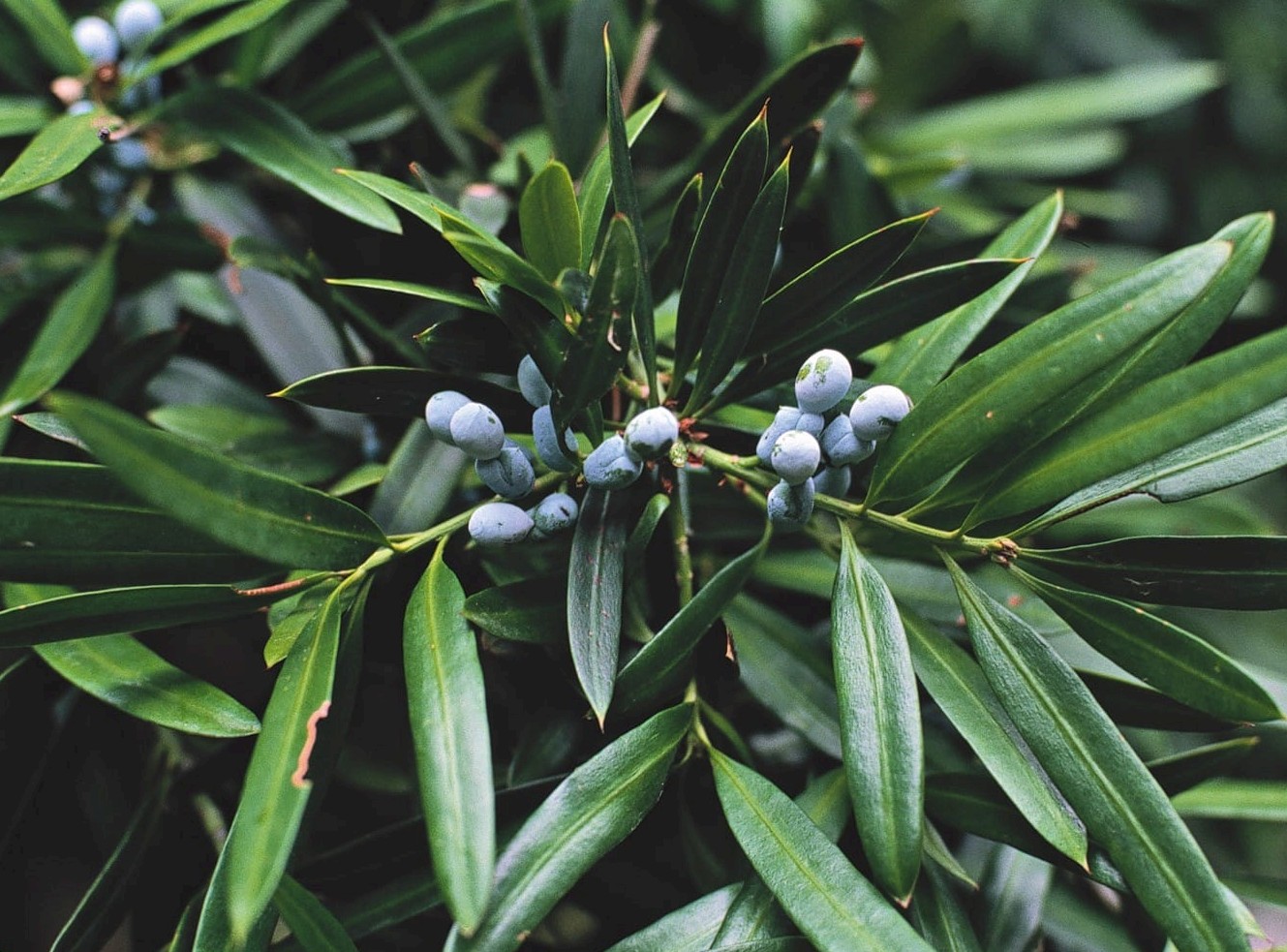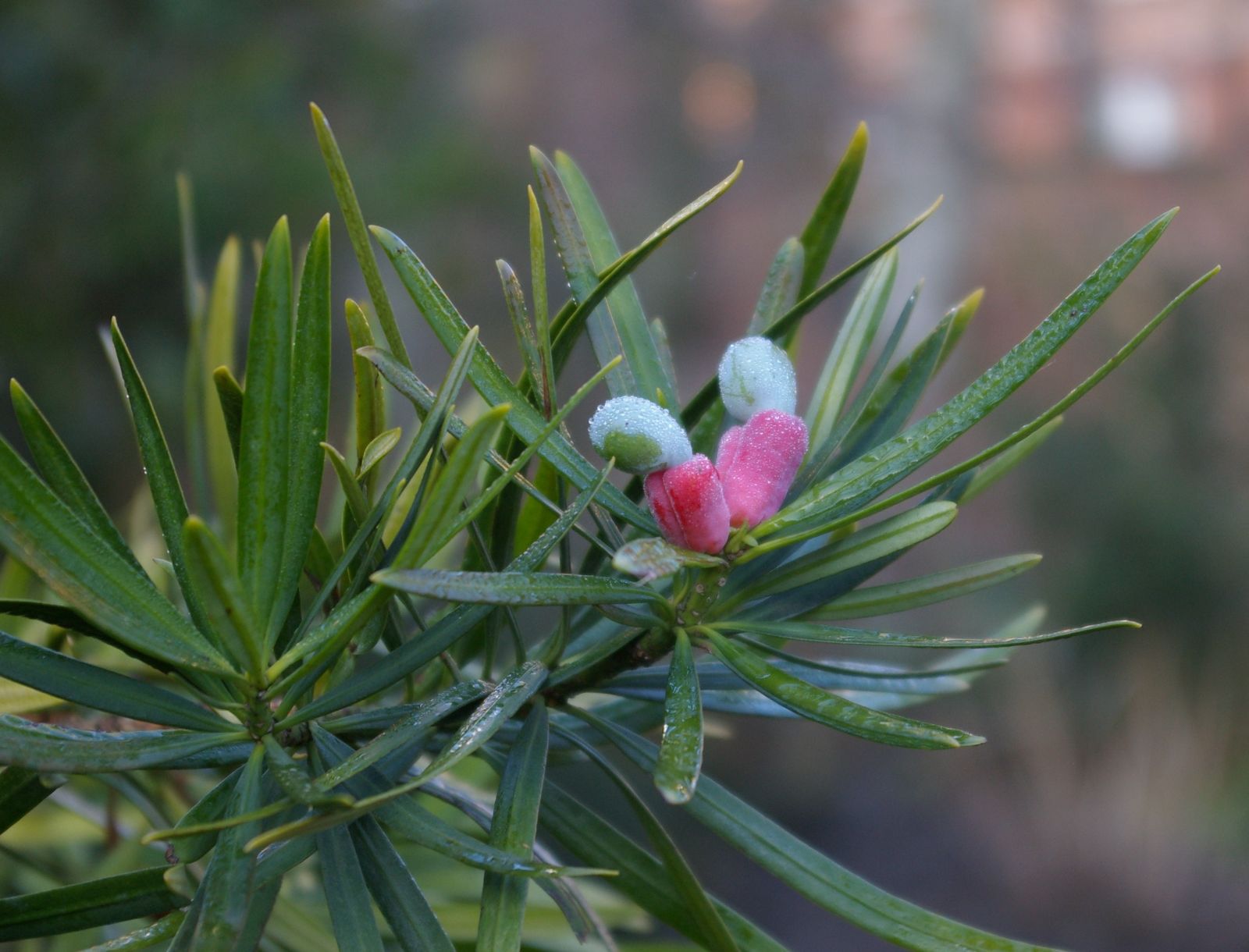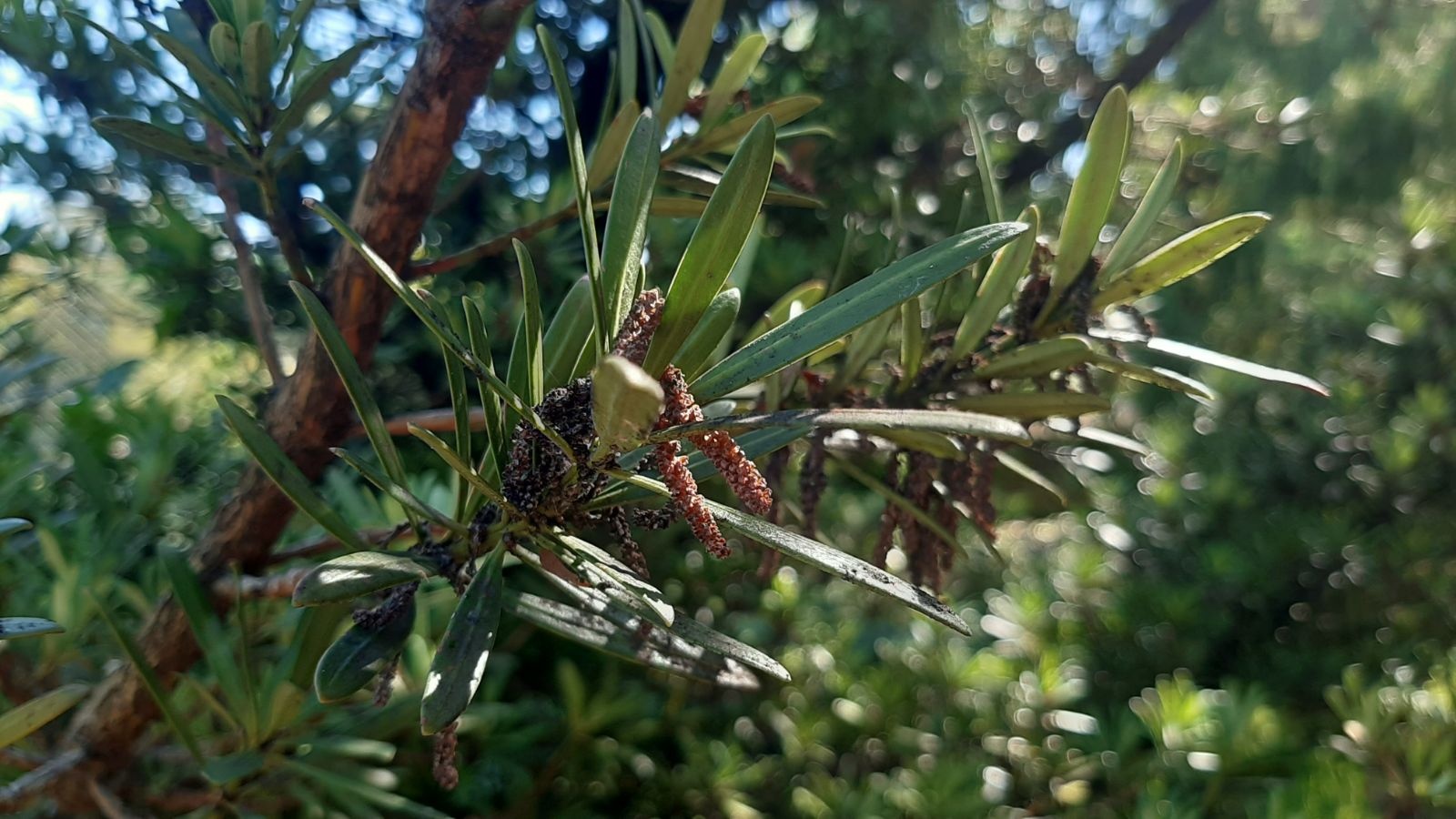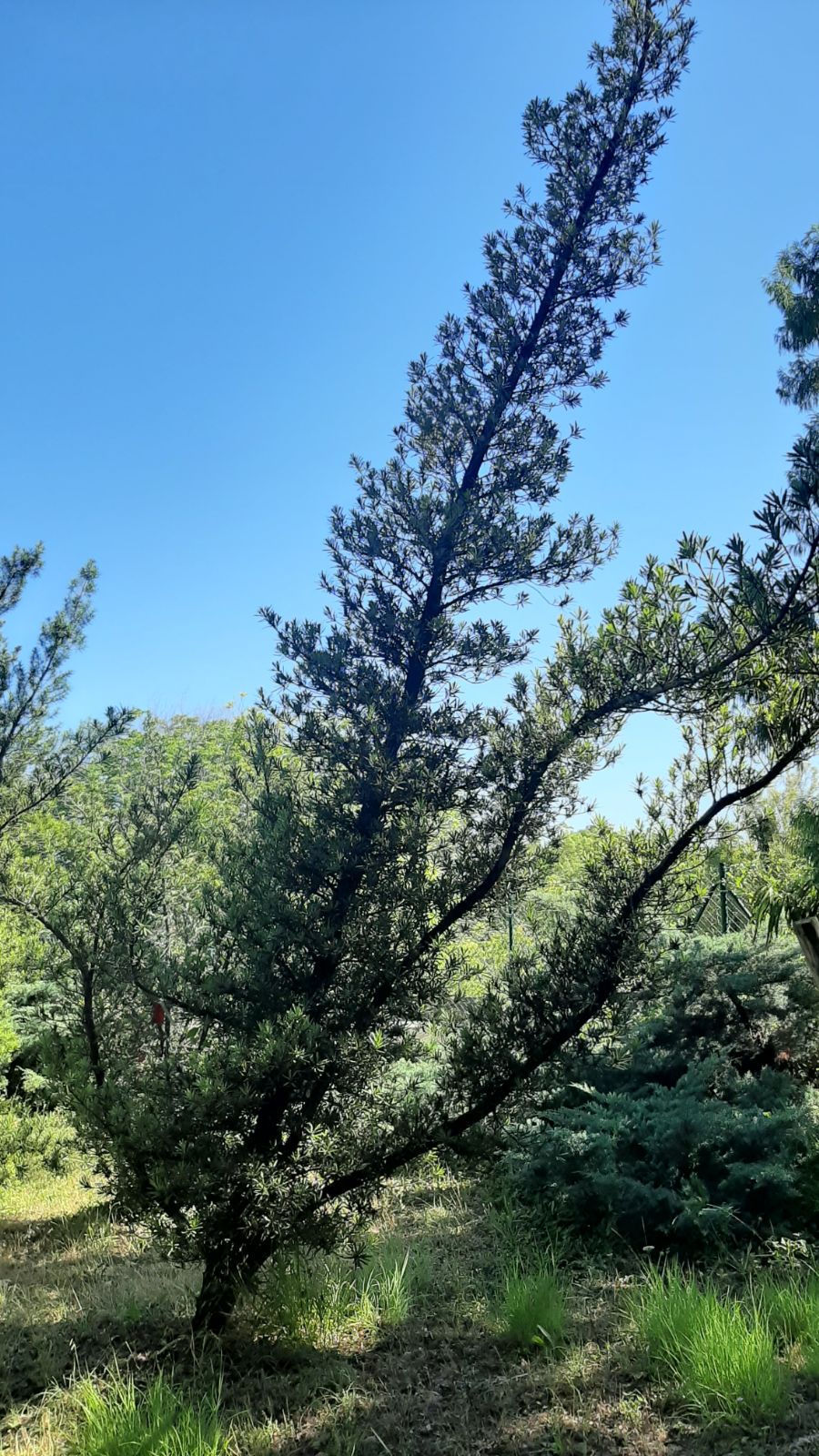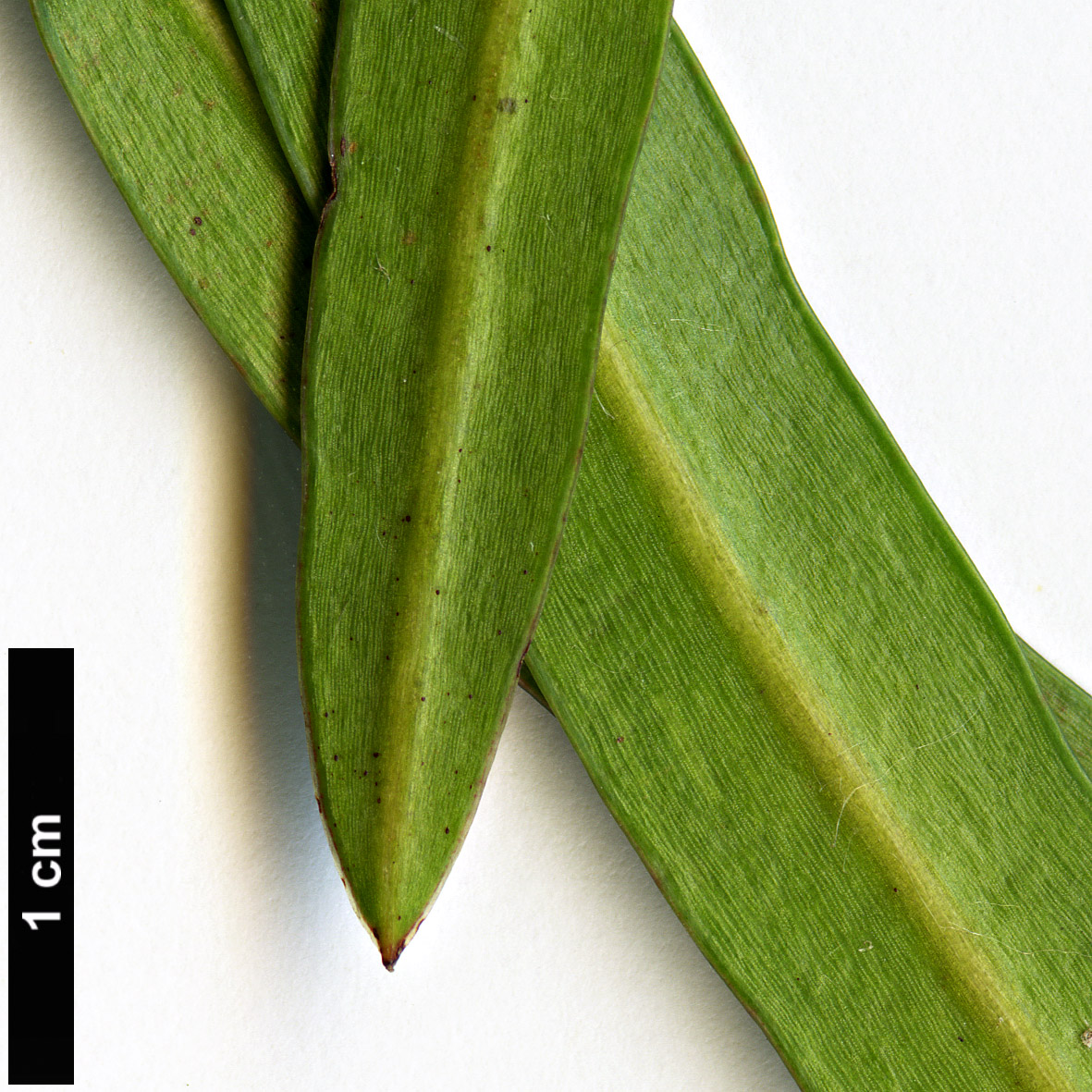Podocarpus elatus
Sponsor
Kindly sponsored by
The British Conifer Society in memory of Derek Spicer VMM, founder member.
Credits
Tom Christian (2023)
Recommended citation
Christian, T. (2023), 'Podocarpus elatus' from the website Trees and Shrubs Online (treesandshrubsonline.
Genus
Common Names
- Illawarra Plum
- Plum Pine
Other taxa in genus
- Podocarpus acutifolius
- Podocarpus acutifolius × lawrencei
- Podocarpus acutifolius × nivalis
- Podocarpus acutifolius × totara
- Podocarpus brassii
- Podocarpus costalis
- Podocarpus drouynianus
- Podocarpus elongatus
- Podocarpus guatemalensis
- Podocarpus henkelii
- Podocarpus laetus
- Podocarpus laetus × nivalis
- Podocarpus lambertii
- Podocarpus latifolius
- Podocarpus lawrencei
- Podocarpus lawrencei × nivalis
- Podocarpus macrophyllus
- Podocarpus matudae
- Podocarpus milanjianus
- Podocarpus nakaii
- Podocarpus neriifolius
- Podocarpus nivalis
- Podocarpus nubigenus
- Podocarpus oleifolius
- Podocarpus parlatorei
- Podocarpus pilgeri
- Podocarpus pseudobracteatus
- Podocarpus salignus
- Podocarpus spinulosus
- Podocarpus totara
Tree to 5–15(–30) m × 1(–2.5) m dbh. Bark thin, longitudinally fissured and scaly on old trees, greyish- to dark-brown. Branches spreading; crown broad, rounded. Branchlets finely ribbed and grooved. Terminal buds small, conical, 1.5–2.5 mm long, c. 1 mm wide at base, with appressed, imbricate, triangular, acute scales. Leaves flushing yellowish-green, variable: on seedlings 2.5–6 × 0.6–0.8 cm; on juvenile and mature trees larger but variable, linear-lanceolate to oblong, (3–)6–18 × 0.5–1.7 cm, base tapering, short-petiolate, apex acute, rarely obtuse; upper surface lustrous dark green with a prominent obtuse midrib; lower surface pale green with ± flattened midrib with two bands of intermittent stomata either side. Pollen cones in clusters of (2–)4, sessile, cylindrical, 10–20 × 2–3 mm at maturity. Seed cones solitary, on stiff peduncles 3–10 mm, with 2 very small bracts which fuse to become a swollen, fleshy receptacle, 15–25(–30) × 15–20 mm, widest at the distal end, red at first, ripening pruinose- to blackish-purple. Seed including the epimatium ovoid-globose, dark pruinose-green ripening purple with a whitish bloom, 15–20 × 12–15 mm. (Farjon 2017; Grimshaw & Bayton 2009).
Distribution Australia New South Wales, Northern Territory, Queensland
Habitat Coastal and subcoastal rain forests, often near water.
USDA Hardiness Zone 9-10
RHS Hardiness Rating H3
Conservation status Least concern (LC)
Podocarpus elatus is distributed in eastern Australia, in subtropical coastal forests in New South Wales and Queensland (Farjon 2017). It has been cultivated in its native Australia for many years where it prefers well drained acidic soils, and where, like most podocarps, it will tolerate some shade (Grimshaw & Bayton 2009). More surprising, given its distribution, are well-established trees in colder gardens, such as some in the UK. Tom Hudson planted P. elatus at Tregrehan in 1992; by 2017 this had made a small tree 3 m tall, albeit with some damage sustained when the bark split following an early autumn frost in 2009 (Smith & Hudson 2017) and some browning which occurs on the rare occasions temperatures there dip below about –6°C (Grimshaw & Bayton 2009). Hudson advocates ‘clever siting in afternoon sun’ to mitigate against this threat posed by early frosts. The University of Oxford’s Harcourt Arboretum is much colder than Tregrehan but also much warmer and sunnier in summer; perhaps this is a factor that has allowed various ‘tender’ conifers to thrive here, notably Araucaria angustifolia and this species of podocarp. John Grimshaw expressed ‘surprise’ that it should be thriving there when researching New Trees in 2007 when it was about 2.5 m: ‘An ex-greenhouse specimen, it was planted out in 2005 and has experienced –9 ºC without significant damage (P. Newth, pers. comm. 2007 in Grimshaw & Bayton 2009). It grows there still, having survived the very cold winters that followed the publication of New Trees (B. Jones pers. comm. 2022).

